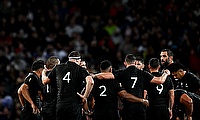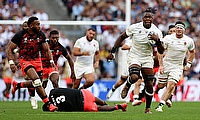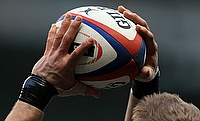The Rugby World Cup Kicking Conundrum
The day Jonny Wilkinson misses 4 consecutive kicks is the day I will I will eat my hat. Just a week ago that was a pretty safe statement. Fortunately, I didn't say it. Who would have thought that would actually come true. A man who has over 1,220 international points 250 odd in world cups alone. Unthinkable.
But of course, it did come true and has immediately sparked a debate on why. Of course, the easy answers would be first match nerves or "an off night or even “ dodgy balls. All have been discussed at length over the past few days and has become one of the talking points of the tournament so far. We have heard gut reactions from Martin Johnson and Steve Thompson that the ball feels different. We have heard the immediate and inevitable defence from Gilbert that players have been using this ball for over a year and there cannot be differences in batches of balls. We have heard the Southern Hemisphere mind games stating that Jonny Wilkinson had an off night but I don't buy those reasons. I think we need to look deeper to get the answers and make balanced conclusions.
Let's start by having a quick look at kicking performance over the first weekend. Out of 103 attempts, only 63 were landed. That is a conversion rate of 61% which is very low by international standards where 70-80% would be expected. In the England Argentina game, the conversion rate was only 35%! That is a real anomaly. If you remove the kicks from the England Argentina game and Chris Paterson's grubber (down to wobbly tee apparently), the conversion rate from the first weekend rises to 66%. Still low but you can easily put that level of decrease down to first match nerves but a drop of 35%+ (probably closer to 45% in Wilkinson's case), affecting just one match and two of the game's great kickers in Wilkinson? Players like Jonny Wilkinson take kicking to scientific levels. Plus Wilkinson believed he was striking the ball sweetly and I reckon he knows when he has connected. Something else is going on!
Could it be the ball? Johnson and Thompson think so also fellow international Paul O'Connell who spoke to Ireland's kickers about the issue. However, no actual kickers have blamed the ball and have taken full responsibility on themselves. Fair play to them, when we add in the length of time they have used the balls without complaining it makes it unlikely that the balls are fully to blame. Even if we did blame the balls, why was the drop in success at Dunedin so much worse than elsewhere?
We have to look at what has changed, the balls are the same, and the players are the same. The Southern Hemisphere sides are used to playing in New Zealand and the conditions there so you would naturally expect a higher percentage of kicks to be made by them in the opening couple of games. The only thing that was significantly different about the game in Dunedin was the enclosed stadium. Here we really have something “ something that has been largely overlooked: the elephant in the room.
Although there are a number of rugby stadiums around the world with retractable roofs, most have openings and are not fully enclosed. The new Otago Stadium in Dunedin is the only stadium of any sport which has both a permanent, fully enclosed roof and a grass pitch. It is inevitable that this will have some effect on the atmosphere.
If you think back to 2009 and the first game under the roof at Wimbledon: Andy Murray was very clear about changes in temperature and “ more importantly “ the humidity. It became heavier and that affected the ball's travel through the air. Cricket fans out there will be well acquainted with the principles of swing bowling “ higher humidity will result in more resistance against the ball and therefore more swing. The same can be applied to rugby “ particularly when a ball is travelling end over end as opposed to a torpedo kick or line out throw. Even if there is not a perceptible change in temperature or humidity within the stadium “ it is inevitable that these will be different compared to the training pitches or other grounds around the world.
Obviously, testing is required to validate this theory and it's unlikely that this will be competed to a sufficient level during the World Cup “ only time will tell if I am correct.
In the meantime, all team managers should re-consider their kicking strategies when playing at Dunedin and select their teams accordingly: look to utilise low risk kicks to the corner instead of mid-range kicks at goal which have now become high risk. Long range kicks are still worth a punt “ many are speculative anyway. Close range kicks shouldn't be too badly affected as there is some margin for error.
It might make for more exciting games and will “ for the time being at least “ neutralise the threat of Wilkinson. Fortunately for England, their two of their three remaining games in Dunedin should not rely on penalties to get wins (Romania and Georgia) with Scotland being the tougher game. Even more fortunately for Scotland, they have no matches scheduled in Dunedin. However, Ireland will have to be careful against Italy as the Irish reliance O'Gara and Sexton's penalties are far higher than Italy's reliance on Bergamasco's.
Whatever happens, tight five forwards should stop blaming the ball!








